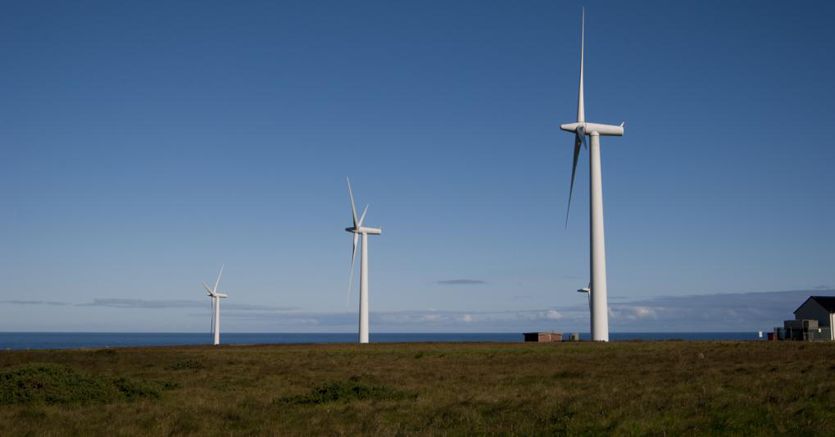After about 3 hours that the “Climate Train”, the train of Avanti West Coast, the English railway company of Trenitalia, bound for Glasgow for COP26, has left London station, the conductor announces that it is crossing the “border” between England and Scotland. There is actually no border, but the reference is to Brexit and Scotland’s heralded independence. Even without announcement, the change is perceived with the naked eye: a landscape dotted with sheep and wind turbines begins. Indeed, sheep are a constant throughout Britain, from Cornwall to the Shetland Islands.
Parks everywhere in Scotland
Wind farms, on the other hand, are typical of modern Scotland: they are scattered everywhere. The story unites sheep and shovels: in the 14th century the wool boom exploded after the black plague, because there were no more farmers. Today wind energy is the new Eldorado after another pandemic, because we need to zero CO2. For centuries a land of hunger (the Great Famine of the late 1600s) and emigration, in perennial struggle with the hated English neighbors, ancient Caledonia is the pioneer country of the energy transition in Great Britain and is already self-sufficient today. with its shovels.
Johnson’s goals
From the Manchester stage, during the Tory party convention, Prime Minister Boris Johnson set the goal of 2035: all the electricity in the country will have to be clean. Every day, Great Britain needs 35 gigawatts to function: of these, already today, over 40% comes from renewable sources; a similar share from fossil fuels, and about 10% from nuclear power. That 40% of “oil & gas” will have to disappear in less than 15 years. For decades, Scotland’s only source of wealth came from North Sea oil. Now that oil must be disposed of, and in any case the fields are running out, the country finds itself another unexpected wealth: the wind, there for millennia but never exploited.
Highlands ideal site
And the Highlands are the ideal place for wind energy, not just for anenometer reasons: it is a largely uninhabited country with poor and barren soils. Installing turbines is easy, there are no NoPala committees. About 15 years ago, recalls Carmelo Scalone, the head of international activities of Falck Renewables, “the country understood that oil would die and over the years would lead to millions of unemployed”, in a country where the oil industry was the main employer. We needed to diversify: “Scotland has planned to switch to wind energy as an alternative to oil.”
Slow and steady installation process
The first wind turbine in Scotland was erected in 1990, and by the end of the 1990s there were just a dozen of them. From that point on, it has been a slow but steady process of transforming and installing turbines. Today there are over 4 thousand, but there is one wind farm in particular that combines decarbonisation, clean energy and social consensus. Just beyond the tiny Fintry, a remote village hidden in the heights of the Scottish moors, a dirt mule track departs from the main road that leads to the top of hills strewn with shovels: these are the two wind farms of Earlsburn and Kingsburn.
